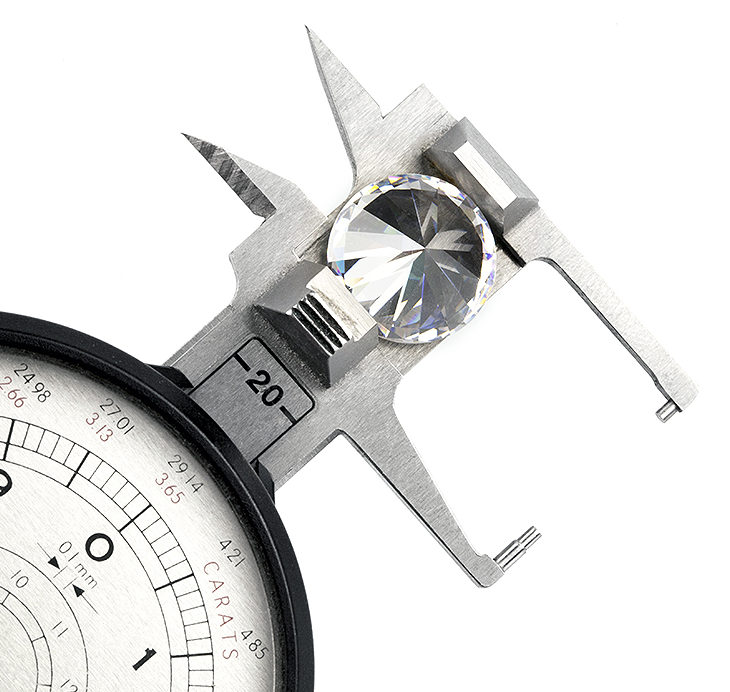How do you measure a diamond?
Diamonds are measured with a precision diamond instrument. We use a Presidium dial gauge for this purpose. This enables us to measure the diameter and depth of loose diamonds. In detail, both measurements are taken in millimetres. (mm).
Don’t confuse diamond carat weight with measurement
Don’t confuse the size of a diamond with the weight of the diamond. Although both are related, they are different. Size is determined by measuring the physical size of the stone. Conversely, diamond weight is measured in Carats using a set of scales.
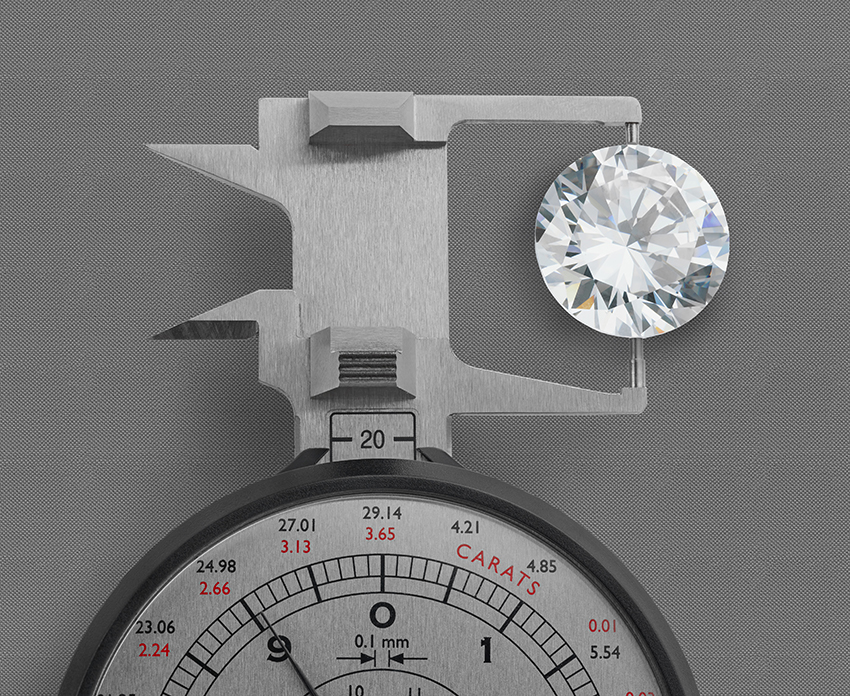
Diamond measurement tools
The Presidium gauge gives accurate readings for the diameter and depth of your diamond. The diameter gives information to help select the correct size of setting for your diamond. If you own your own diamond, we require this information to make a ring mount.
The Presidium diamond gauge
Buy the Presidium Gauge in our shop
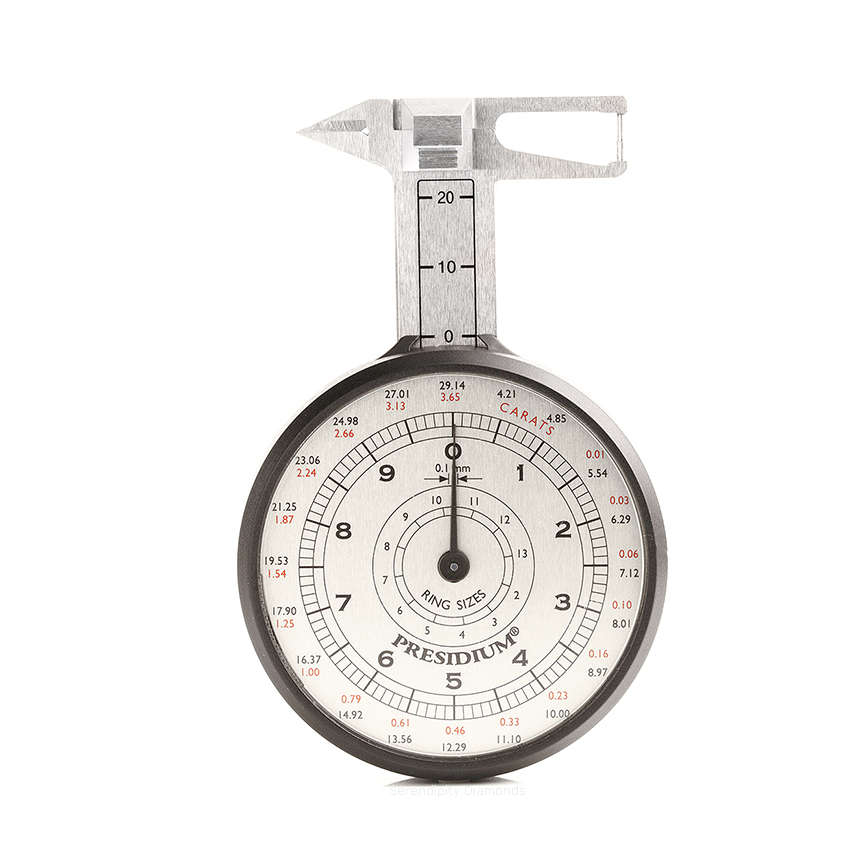
The best instrument for measuring your diamond is the Presidium gauge. We suggest using the dial version. Other variations exist. For example, some gauges use a digital display instead of a diamond.
This diamond measurement instrument gives an accurate reading of the millimetre size of your diamond.
Using the diamond measurement gauge
How to find out the diamond size without using a gauge
It is impossible to find an accurate diamond size without an instrument. Provided you have a diamond size chart, it is possible to estimate the size. Diamond charts (see below) feature most diamond shapes with their carat weight and approximate sizes.
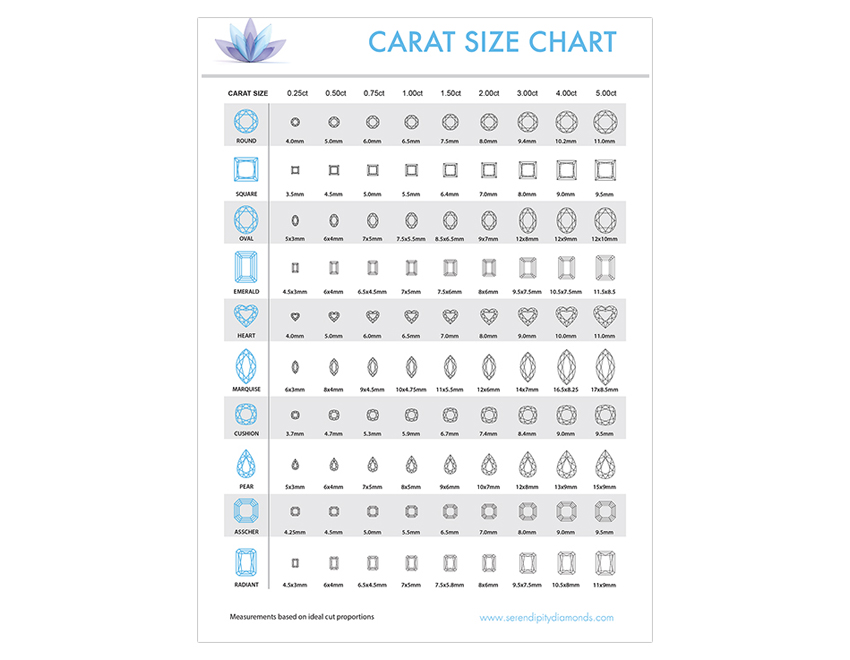
Finding the size of a diamond from a diamond certificate
Some diamonds are laboratory-certified. As a result, they include a report. To explain, this report includes key information. For example, the size, diamond colour and clarity. Diamond size appears on the report as shown below. Look under ‘measurements’ for the size. Here we see the following measurements.
Measurements………….4.97 – 4.98 x 3.01mm
But why are there three different measurements? To clarify, round diamonds vary fractionally in diameter. Depending on where you measure the width, most diamonds vary fractionally. As a result, the smallest and largest diamond reading appears. In addition, we find a record of the depth.
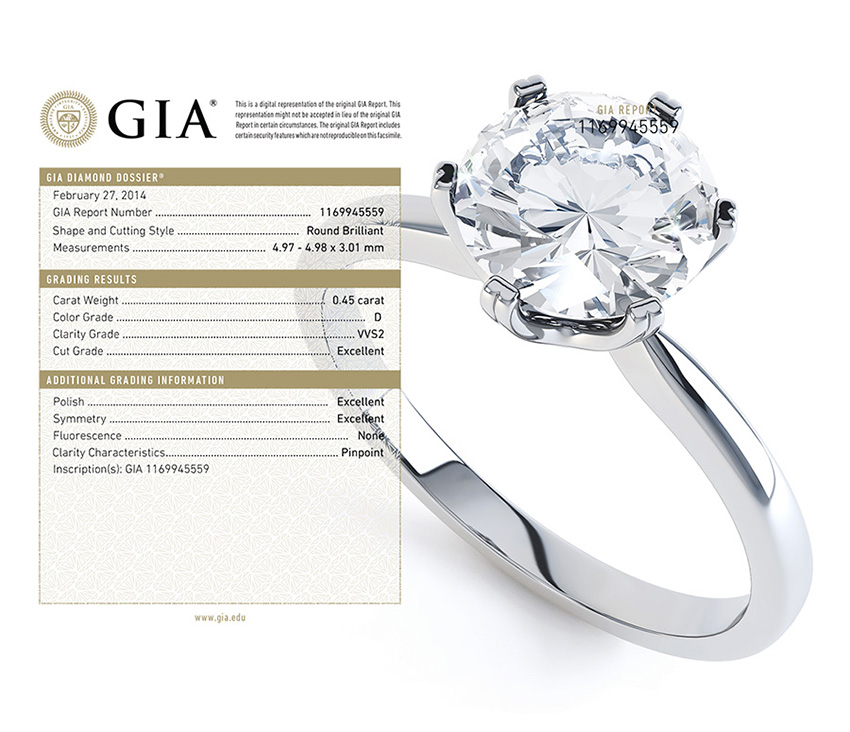
How to measure small diamonds
Small diamonds come in regular millimetre sizes. We measure small diamonds to ensure consistency. Some items of jewellery feature many small diamonds. For example, cluster rings. As a result, we sieve and measure tiny diamonds. In addition to colour and clarity, we match diamonds in size. Interestingly, we buy diamonds in mixed sizes. Our team sorts diamonds using diamond sieves. Metal plates separate certain sizes.
Diamonds for eternity rings are just one example of accurately measured diamonds.

What is the smallest size for a diamond?
In general, the smallest diamond size is 1mm in diameter. Diamonds are single-cut or fully cut in this size and arrive in parcels varying in quantity.
How to measure a diamond. A guide to measuring the size of your diamond
We help many clients and jewellers with diamond measurements. Our knowledge and expertise come after decades of working with diamonds. As a result, we have answers for most diamond measurement questions. For example, how large specific shapes are. In reality, most fancy diamond shapes cause confusion. Many feature less regular measurements. For example, a Marquise can be short and fat. By comparison, some are long and skinny by comparison.
Why measure a diamond?
There are different reasons for finding out the measurement of a diamond. Firstly, it gives us information on what setting size to make.
We supply finished ring mounts for clients with existing diamonds. Therefore, we need the full measurements of the diamond to make the setting. For example, a diamond weighing 0.50cts. We would expect this diamond to measure 5mm in diameter. Interestingly, diameter is the most important measurement for a round brilliant cut diamond. Most ring designs come in a range of setting sizes. Each size holds a different diamond size. In this instance, we would create a 5mm setting for the diamond.
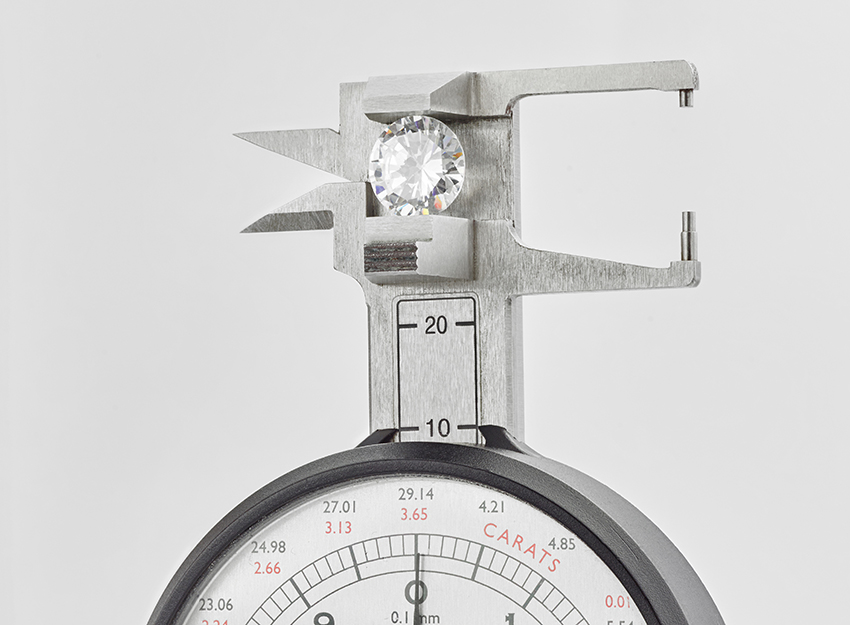
Estimating carat weight by measuring a diamond
Sometimes we need to take the measurement of a diamond to estimate carat weight. When we create a jewellery valuation, we cannot always weigh the diamond. By taking measurements, we can estimate the diamond’s weight. Furthermore, we work with various formulas to calculate the weight.
Which measurements to note for your diamond
There are 3 x measurements to consider for most diamonds. We take the diameter for round diamonds. For elongated diamonds, we take length x width measurements. Finally, we take a recording of the depth.
The depth will be critical in some situations. For example, thick diamonds can be too deep for a setting. Measuring the depth helps to check this.
Formulae for calculating diamond carat weight require a depth measurement. (see the main photo for measuring the depth on the gauge.)
Round Brilliant Cut Diamonds – Diameter – Diameter (this is the subtle difference from smallest to largest reading) x depth from table to the culet.
Princess Cut Diamonds – Length x Width (most princess cuts are not perfectly square, but if the diamond is, length and width will be equal x depth from table to culet.)
Emerald Cut / Baguette Cut Diamonds – Length x width x depth
Trilliant Cut Diamonds – Typically measured point to point x depth.
About Mark Johnson
Mark founded Isle of Wight jewellers Serendipity Diamonds in 2007 after a career on the polished diamonds industry. Today he works in the Serendipity showroom, helping clients with jewellery, creating handmade designs and updating their two jewellery websites SerendipityDiamonds.com and Isle-of-Wight-Jewellery.co.uk



